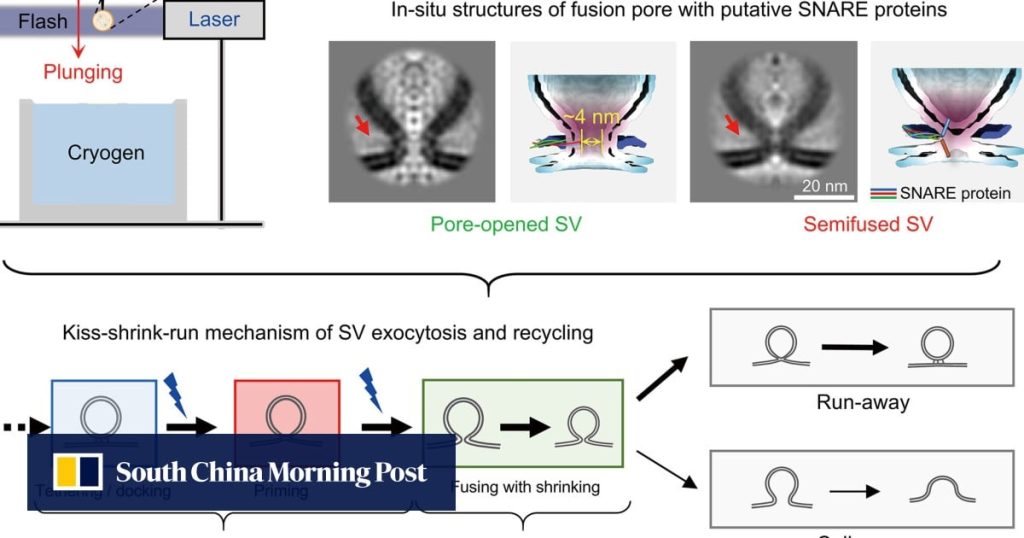Chinese scientists have captured the “kiss-shrink-run” process of neuronal communication using the world’s first camera with nanometre resolution and a millisecond-scale imaging speed.
Their findings have also helped to resolve a key scientific debate that has plagued neuroscientists for half a century.
This achievement – led mainly by biologists from the University of Science and Technology of China (USTC) and the Shenzhen Institutes of Advanced Technology, an affiliate of the Chinese Academy of Sciences – was published by the academic journal Science on Thursday.
The way our brain works relies on the efficient and precise transmission of signals between the hundreds of billions of neurons. These signals are carried by tiny structures called synaptic vesicles.
This has long remained elusive primarily because the process occurs on a timescale of milliseconds, while structural changes take place on a nanoscale, making it difficult for traditional techniques to capture its transient dynamics.


